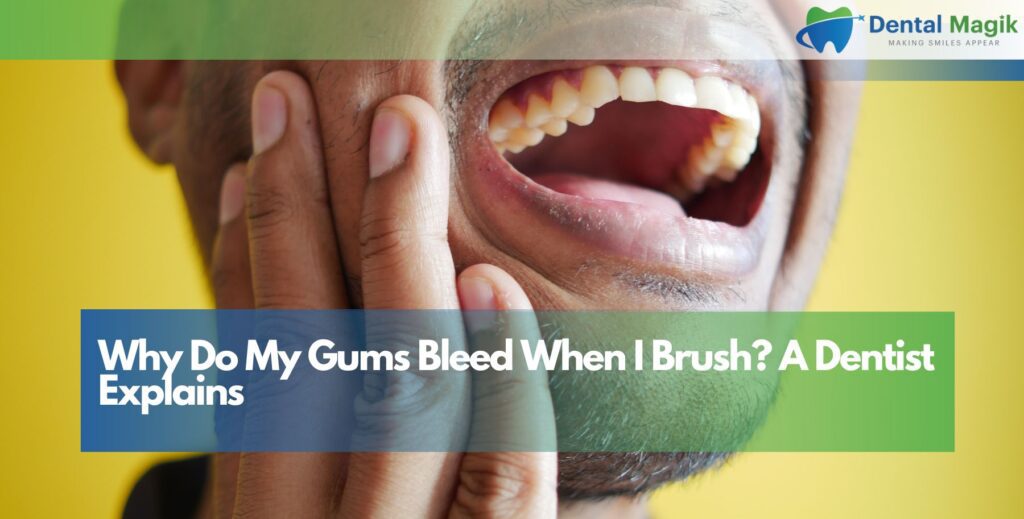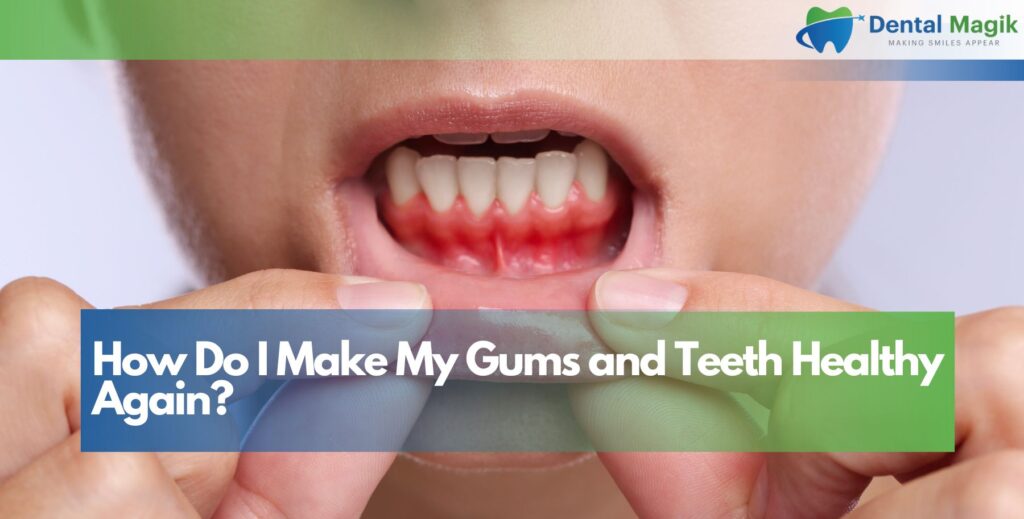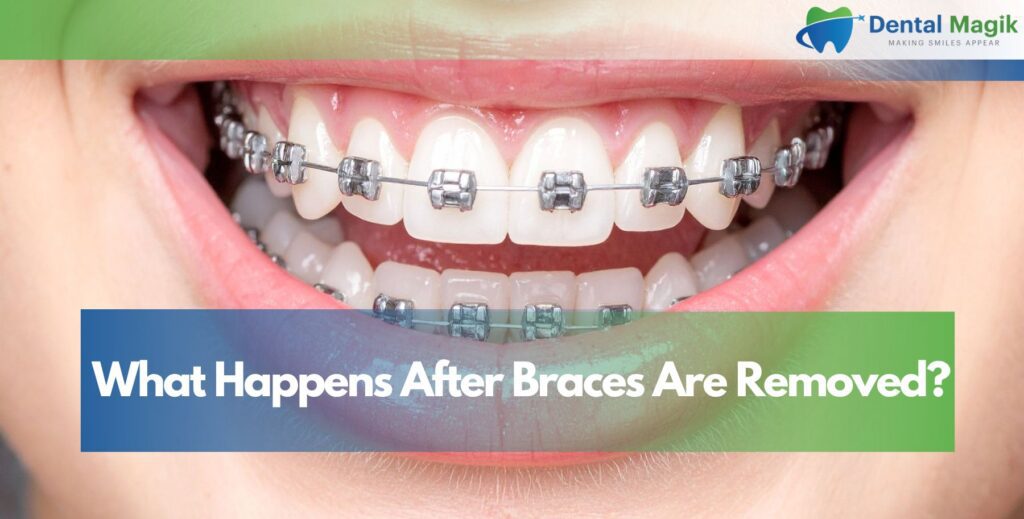Bleeding gums are one of the most common dental concerns that patients bring to my practice. If you’ve noticed pink or red tinges in your toothpaste foam or blood on your toothbrush, you’re not alone. While occasional gum bleeding might seem harmless, it’s often your mouth’s way of signaling that something needs attention. Understanding the root causes of bleeding gums and knowing how to address them can help you maintain optimal oral health and prevent more serious complications down the road.
Table of Contents
Common Causes of Bleeding Gums
Gum bleeding rarely occurs without reason, and identifying the underlying cause is crucial for effective treatment. Most cases stem from preventable factors that can be addressed with proper oral hygiene and lifestyle modifications.
Gingivitis: The Primary Culprit
Gingivitis represents the most frequent cause of bleeding gums, affecting millions of Americans annually. This inflammatory condition develops when bacterial plaque accumulates along the gum line, causing irritation and swelling. The bacteria in plaque produce toxins that trigger your body’s immune response, leading to inflammation and increased blood flow to the affected area.
When you brush or floss, the inflamed gum tissue becomes more fragile and prone to bleeding. Early-stage gingivitis is completely reversible with proper care, but ignoring the warning signs can lead to progressive gum disease. The good news is that most people can eliminate gingivitis-related bleeding within two to three weeks of implementing consistent oral hygiene practices.
Poor Oral Hygiene Habits
Inadequate brushing and infrequent flossing create the perfect environment for plaque buildup and subsequent gum irritation. Many people brush too quickly or skip areas where food particles and bacteria tend to accumulate. Inconsistent oral care allows plaque to harden into tartar, which can only be removed through professional dental cleaning.
Aggressive brushing with hard-bristled toothbrushes can also traumatize delicate gum tissue, causing bleeding and recession. The key lies in finding the right balance between thorough cleaning and gentle technique to maintain healthy gums without causing damage.
Hormonal Changes and Medical Conditions
Hormonal fluctuations during pregnancy, menstruation, puberty, and menopause can make gums more sensitive and prone to bleeding. Pregnancy gingivitis affects up to 75% of expectant mothers due to increased estrogen and progesterone levels that amplify the body’s response to plaque bacteria.
Certain medical conditions including diabetes, blood disorders, autoimmune diseases, and vitamin deficiencies can also contribute to gum bleeding. Medications such as blood thinners, antiplatelet drugs, and some antidepressants may increase bleeding tendency throughout the body, including the gums.
When Bleeding Gums Signal Serious Problems
While occasional minor bleeding might not indicate immediate danger, persistent or severe gum bleeding can signal more serious underlying conditions that require prompt professional attention.
Periodontal Disease Progression
Untreated gingivitis can advance to periodontitis, a more severe form of gum disease that affects the supporting structures of your teeth. Advanced periodontal disease can cause deep pockets to form between teeth and gums, bone loss, tooth mobility, and eventually tooth loss if left untreated.
Warning signs of periodontal disease include persistent bad breath, gum recession, loose teeth, pus formation, and pain when chewing. Early intervention through professional periodontal therapy can often halt or slow disease progression and preserve your natural teeth.
Systemic Health Connections
Chronic gum inflammation has been linked to various systemic health conditions including heart disease, diabetes complications, stroke, and respiratory infections. The inflammatory mediators produced during gum disease can enter the bloodstream and potentially contribute to cardiovascular problems and other health issues.
Pregnant women with severe gum disease may face increased risks of preterm birth and low birth weight babies. These connections highlight the importance of maintaining optimal gum health as part of your overall wellness strategy.
Professional Treatment Options
Dental professionals offer various treatment approaches depending on the severity and underlying cause of your gum bleeding. Early intervention typically yields the best outcomes and prevents the need for more invasive procedures.
Professional Dental Cleanings
Regular dental cleanings every six months form the foundation of preventive gum care. Dental hygienists use specialized tools to remove plaque and tartar deposits that regular brushing and flossing cannot eliminate. Professional cleanings also include gum tissue evaluation and personalized oral hygiene instruction to help you maintain healthy gums at home.
For patients with active gingivitis or early periodontal disease, more frequent cleanings every three to four months may be recommended until gum health stabilizes.
Deep Cleaning and Periodontal Therapy
Patients with moderate to severe gum disease may require scaling and root planing, commonly known as deep cleaning. This non-surgical procedure involves removing bacterial deposits from tooth roots below the gum line and smoothing root surfaces to promote healing and reattachment of gum tissue.
Advanced cases might necessitate surgical interventions such as gum grafts, pocket reduction surgery, or regenerative procedures to restore lost gum tissue and bone support around affected teeth.
Home Care and Prevention Strategies
Effective home care plays the most crucial role in preventing and managing bleeding gums. Consistent daily habits can dramatically improve gum health and reduce bleeding within a matter of weeks.
Proper Brushing Techniques
Gentle brushing with a soft-bristled toothbrush for at least two minutes twice daily helps remove plaque without traumatizing gum tissue. Use fluoride toothpaste and focus on the gum line where bacteria tend to accumulate. Electric toothbrushes with pressure sensors can help ensure you’re not brushing too aggressively while providing superior plaque removal.
Replace toothbrushes every three months or after illness to maintain optimal cleaning effectiveness and prevent bacterial recontamination.
Daily Flossing and Interdental Care
Daily flossing removes food particles and plaque from between teeth where toothbrushes cannot reach. Proper flossing technique involves gently guiding the floss between teeth and curving it around each tooth surface to clean below the gum line. Water flossers and interdental brushes can serve as effective alternatives for people who struggle with traditional floss.
Antimicrobial Mouth Rinses
Therapeutic mouth rinses containing antimicrobial ingredients can help reduce bacterial load and inflammation in the mouth. Look for ADA-approved products containing chlorhexidine, cetylpyridinium chloride, or essential oils that have been clinically proven to fight gum disease. Alcohol-free formulations are often better tolerated and less likely to cause dry mouth or tissue irritation.
Conclusion
Bleeding gums should never be ignored, even if the symptoms seem minor at first. Most cases stem from conditions like gingivitis, poor oral hygiene, or hormonal changes, but persistent gum bleeding may signal periodontal disease or even systemic health concerns. With timely professional care, proper brushing and flossing habits, and regular dental visits, you can restore gum health and prevent serious complications. Prioritizing gum care is an investment in your overall health and well-being.
FAQs
What are the common causes of bleeding gums?
Bleeding gums are often caused by gingivitis, poor brushing habits, aggressive brushing, hormonal changes, or certain medical conditions. Early detection and treatment can prevent progression to gum disease.
Can bleeding gums heal on their own?
Mild bleeding due to gingivitis can often heal within two to three weeks with improved oral hygiene—brushing twice daily, flossing, and using antimicrobial rinses. Persistent bleeding, however, requires a dentist’s evaluation.
Is bleeding gums a sign of gum disease?
Yes, bleeding is one of the earliest signs of gum disease. If untreated, it may progress from gingivitis to periodontitis, which can cause gum recession, tooth mobility, and bone loss.
Should I see a dentist if my gums bleed when brushing?
Yes. While occasional bleeding may result from brushing too hard, frequent or severe bleeding indicates gum inflammation or infection. A dentist can diagnose the cause and recommend treatment.
Can vitamin deficiency cause bleeding gums?
Yes, deficiencies in vitamin C and vitamin K are known to cause gum bleeding. A balanced diet combined with professional dental care helps prevent nutritional-related oral health issues.
How do I stop my gums from bleeding?
Improve daily oral care—use a soft-bristled toothbrush, floss gently, and rinse with an antimicrobial mouthwash. Avoid smoking, maintain a healthy diet, and schedule professional dental cleanings regularly.
Is bleeding gums linked to other health problems?
Yes. Research shows connections between chronic gum inflammation and systemic conditions like heart disease, diabetes, and stroke. Addressing gum health is vital for your overall well-being.







